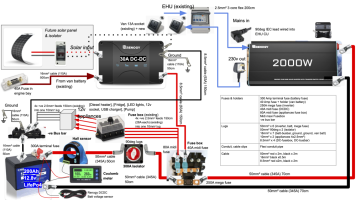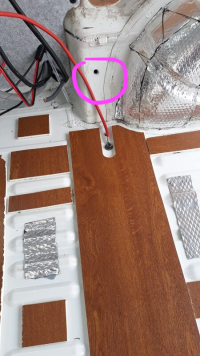Hey all,
I'm switching my leisure setup to lithium. I've got the main components ready - 2000W Renogy inverter, 30Amp DC-DC charger, and a 200Ah LiFePo4 battery.
I'm looking for feedback and tips on the wiring and fuse sizing on the diagram please - I look at the complexity and cost of this and it makes a power-station look SO much simpler! But hey we don't do this because it's easy, right?
Thanks in advance.

I'm switching my leisure setup to lithium. I've got the main components ready - 2000W Renogy inverter, 30Amp DC-DC charger, and a 200Ah LiFePo4 battery.
I'm looking for feedback and tips on the wiring and fuse sizing on the diagram please - I look at the complexity and cost of this and it makes a power-station look SO much simpler! But hey we don't do this because it's easy, right?
Thanks in advance.


